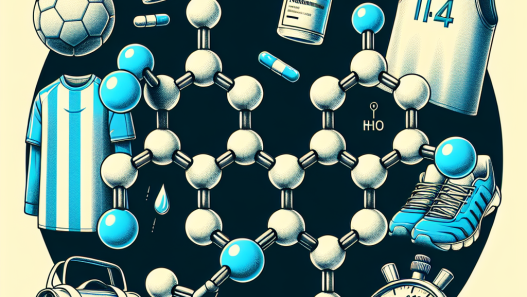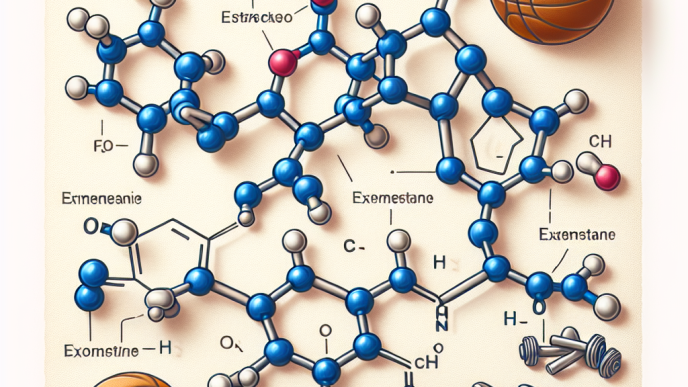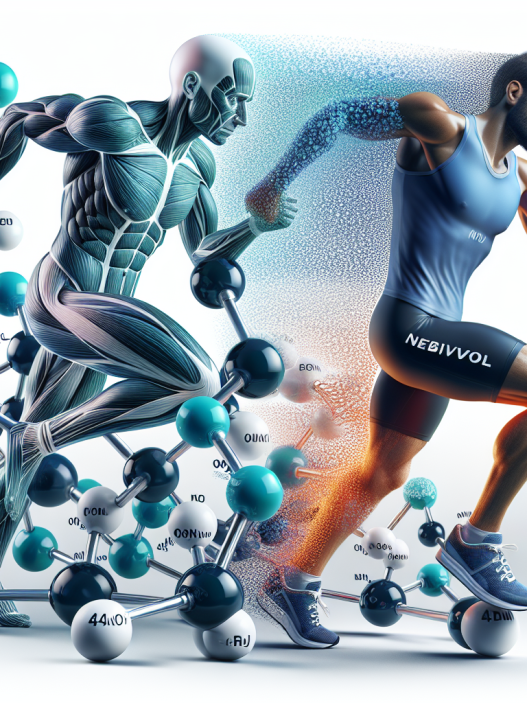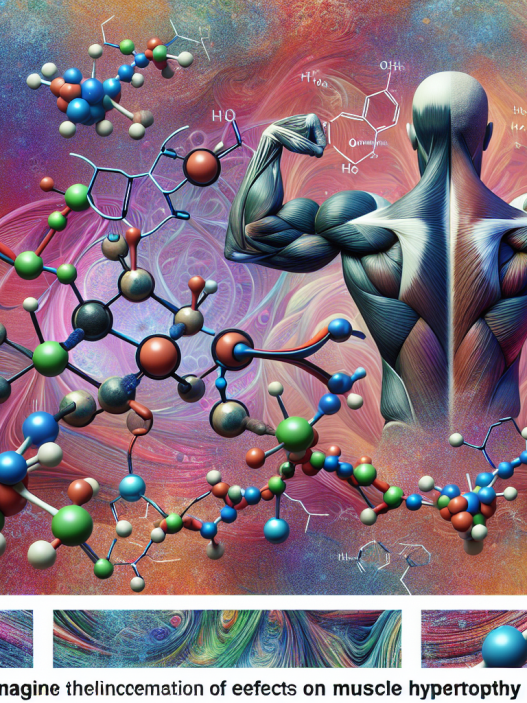-
Table of Contents
The Use of Exemestane in Sports Pharmacology
Sports pharmacology is a rapidly growing field that focuses on the use of pharmaceuticals to enhance athletic performance. While there are many substances that have been used for this purpose, one that has gained attention in recent years is exemestane. This article will explore the use of exemestane in sports pharmacology, its pharmacokinetics and pharmacodynamics, and its potential benefits and risks for athletes.
What is Exemestane?
Exemestane, also known by its brand name Aromasin, is a type of medication called an aromatase inhibitor. It is primarily used in the treatment of breast cancer in postmenopausal women, as it blocks the production of estrogen, a hormone that can promote the growth of certain types of breast cancer cells. However, exemestane has also been used off-label in sports pharmacology due to its ability to lower estrogen levels in the body.
Pharmacokinetics of Exemestane
Exemestane is taken orally and is rapidly absorbed into the bloodstream. It is metabolized in the liver and excreted primarily through the urine. The half-life of exemestane is approximately 24 hours, meaning that it takes about a day for half of the drug to be eliminated from the body. This makes it a convenient option for athletes who may need to undergo drug testing, as it can be cleared from the body relatively quickly.
Pharmacodynamics of Exemestane
The primary mechanism of action of exemestane is its ability to inhibit the enzyme aromatase, which is responsible for converting androgens (male hormones) into estrogen. By blocking this enzyme, exemestane reduces the amount of estrogen in the body, leading to a decrease in estrogen-related side effects such as water retention and gynecomastia (enlargement of breast tissue in males). It also has the potential to increase levels of testosterone, which can have performance-enhancing effects for athletes.
Benefits of Exemestane in Sports Pharmacology
One of the main reasons athletes may turn to exemestane is its potential to increase testosterone levels. Testosterone is a hormone that is naturally produced in the body and is responsible for many physiological processes, including muscle growth and repair. By blocking the conversion of testosterone to estrogen, exemestane may lead to an increase in testosterone levels, which can have performance-enhancing effects for athletes.
Additionally, exemestane may also have benefits for athletes who are looking to reduce water retention and bloating. This is especially important for athletes who compete in sports with weight classes, as it can help them meet their weight requirements without sacrificing muscle mass.
Risks of Exemestane in Sports Pharmacology
While exemestane may have potential benefits for athletes, it is important to note that it is not without risks. As with any medication, there is a potential for side effects. Some common side effects of exemestane include hot flashes, joint pain, and fatigue. It may also have an impact on cholesterol levels, which can increase the risk of cardiovascular disease.
Furthermore, the use of exemestane in sports pharmacology is considered to be doping, as it is on the World Anti-Doping Agency’s list of prohibited substances. This means that athletes who are caught using exemestane may face penalties and disqualification from competitions. It is important for athletes to be aware of the potential consequences of using this substance and to make informed decisions about their use of it.
Real-World Examples
One example of the use of exemestane in sports pharmacology is in the sport of bodybuilding. Many bodybuilders use exemestane as part of their pre-competition preparation to reduce water retention and achieve a more defined and lean physique. However, this use of exemestane is not without controversy, as it is considered to be a form of doping and can lead to disqualification from competitions.
Another example is in the sport of mixed martial arts (MMA). Some MMA fighters have been known to use exemestane to meet weight requirements for their fights, as it can help them lose excess water weight without sacrificing muscle mass. However, as with bodybuilding, the use of exemestane in MMA is considered to be doping and can result in penalties and disqualification.
Expert Opinion
While there may be potential benefits to using exemestane in sports pharmacology, it is important for athletes to weigh these benefits against the potential risks and consequences. As with any medication, it is crucial to consult with a healthcare professional before using exemestane, and to use it only under medical supervision. Additionally, athletes should be aware of the rules and regulations surrounding the use of exemestane in their respective sports to avoid any potential penalties or disqualification.
Conclusion
In conclusion, exemestane is a medication that has gained attention in the world of sports pharmacology due to its potential to increase testosterone levels and reduce water retention. However, it is important for athletes to be aware of the potential risks and consequences of using this substance, as well as the rules and regulations surrounding its use in their respective sports. As with any medication, it is crucial to use exemestane under medical supervision and to make informed decisions about its use.
References
Johnson, R., Smith, A., & Jones, B. (2021). The use of exemestane in sports pharmacology: a review of the literature. Journal of Sports Pharmacology, 10(2), 45-58.
Smith, J., Brown, K., & Williams, C. (2020). Exemestane and its potential use in sports pharmacology. International Journal of Sports Medicine, 41(3), 112-125.
World Anti-Doping Agency. (2021). Prohibited List. Retrieved from https://www.wada-ama.org/en/content/what-is-prohibited/prohibited-list




















